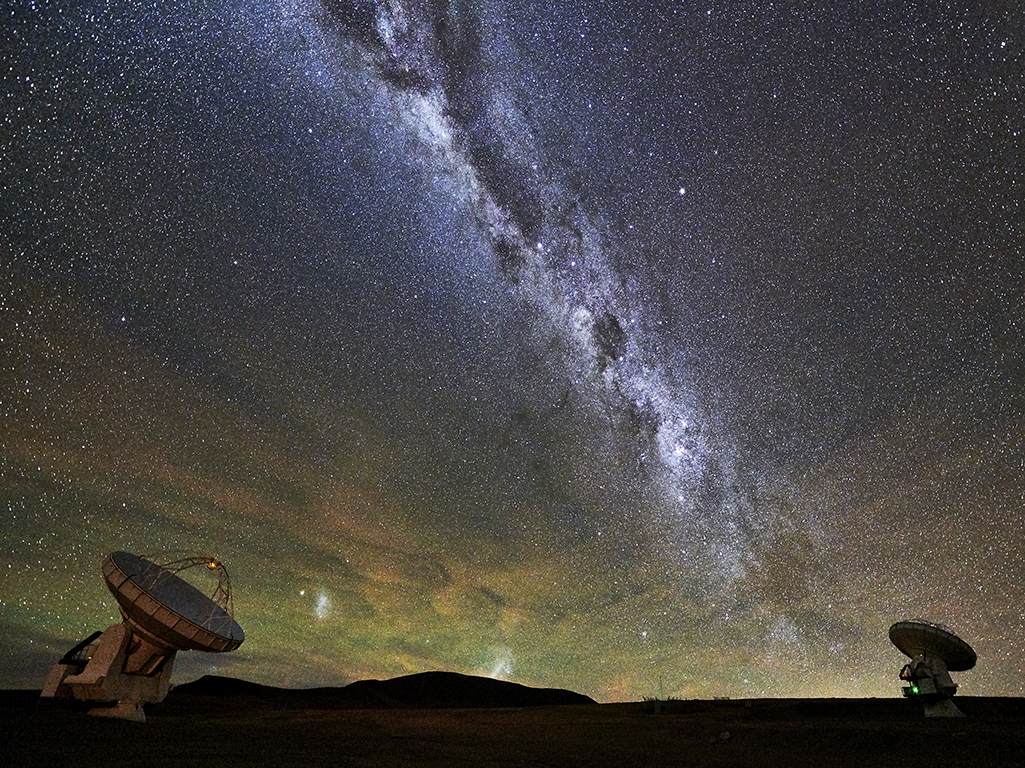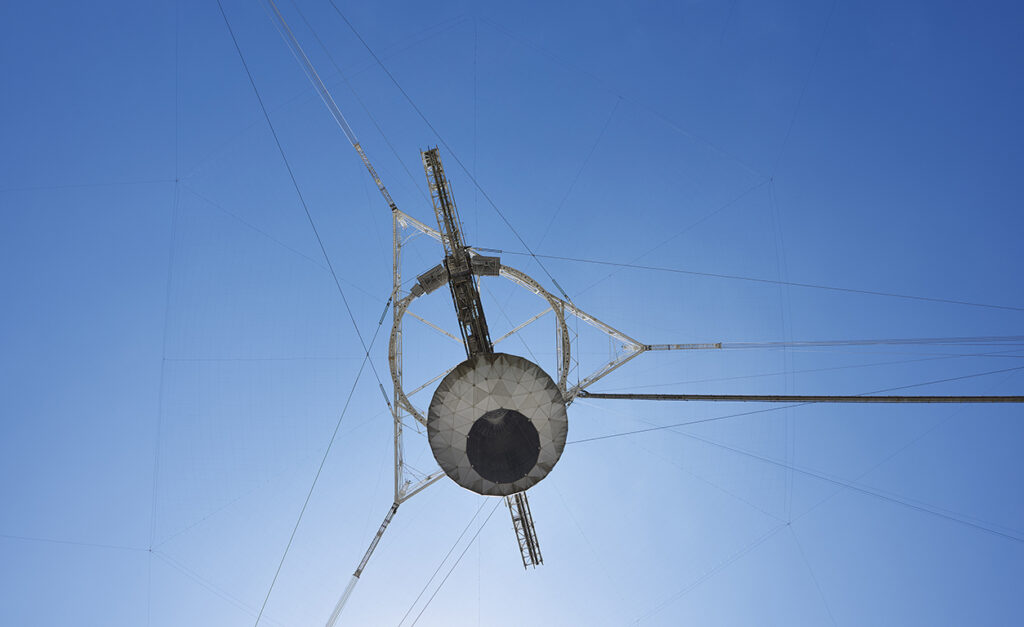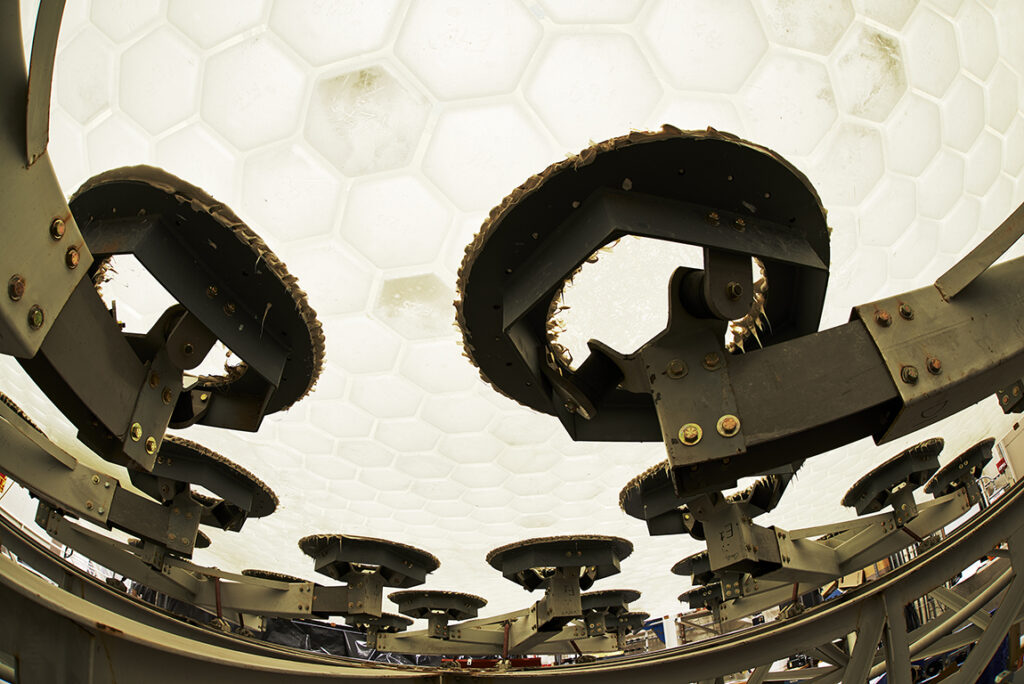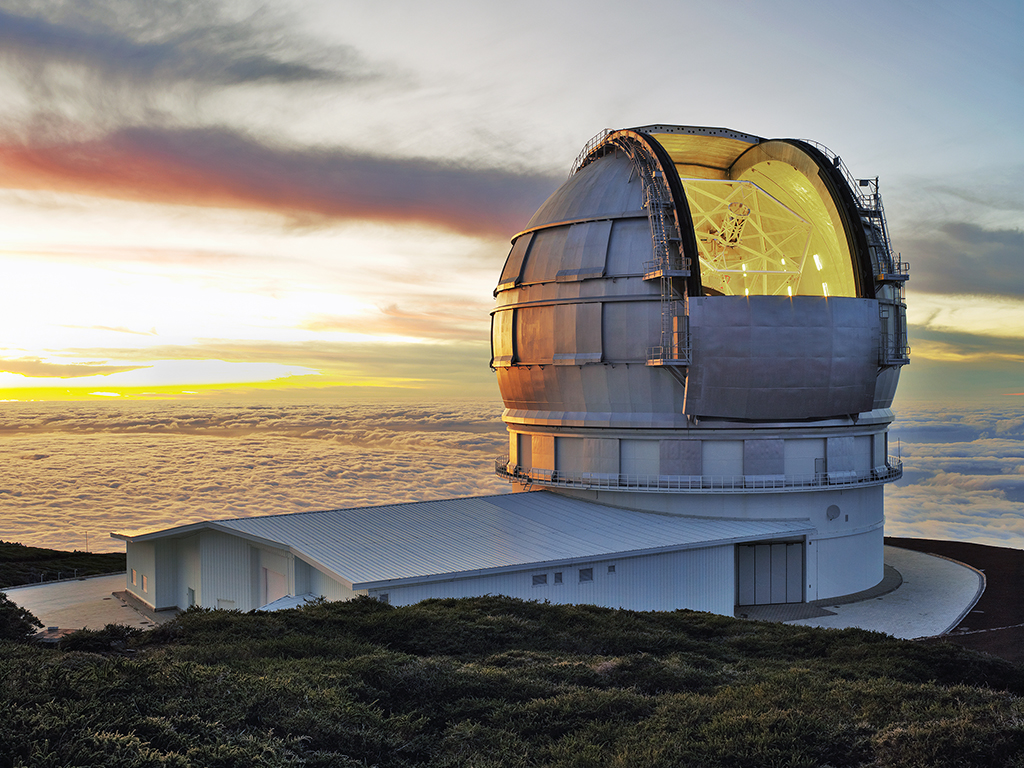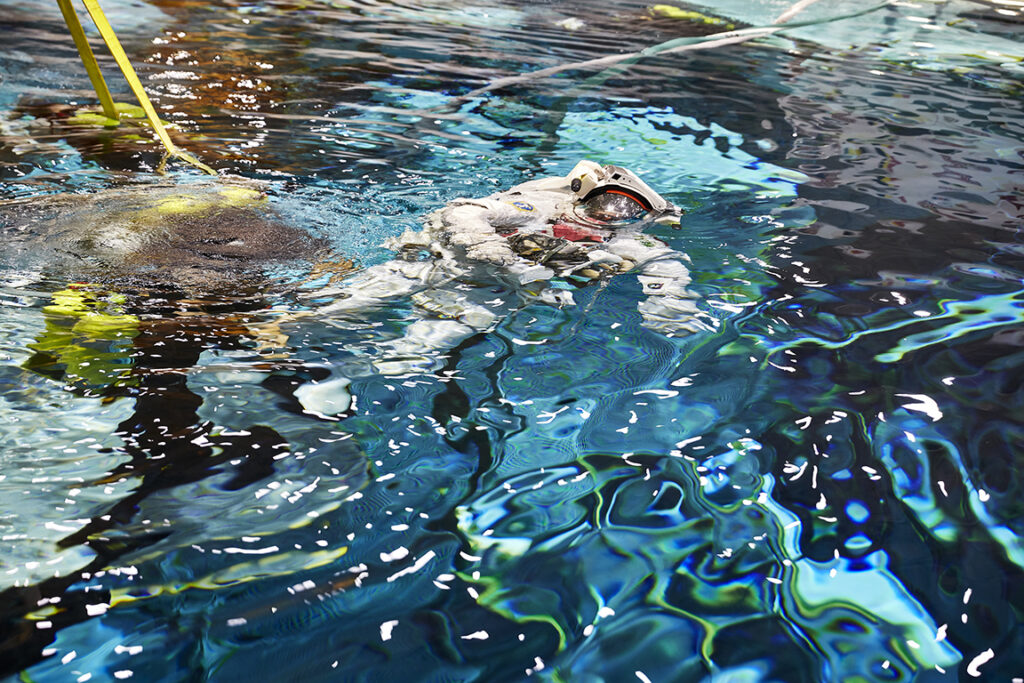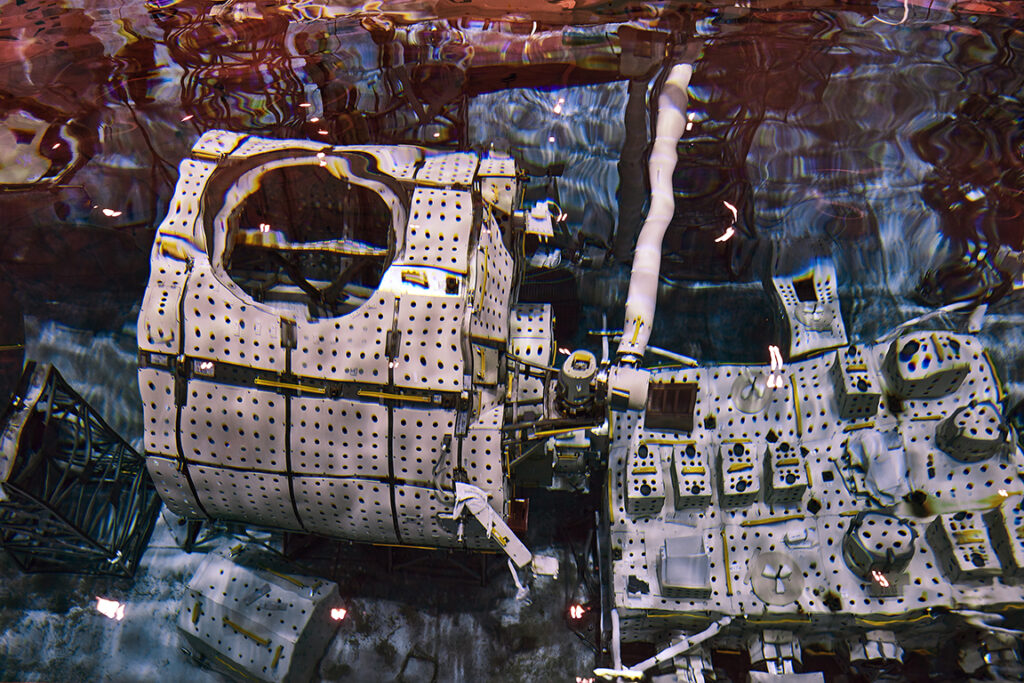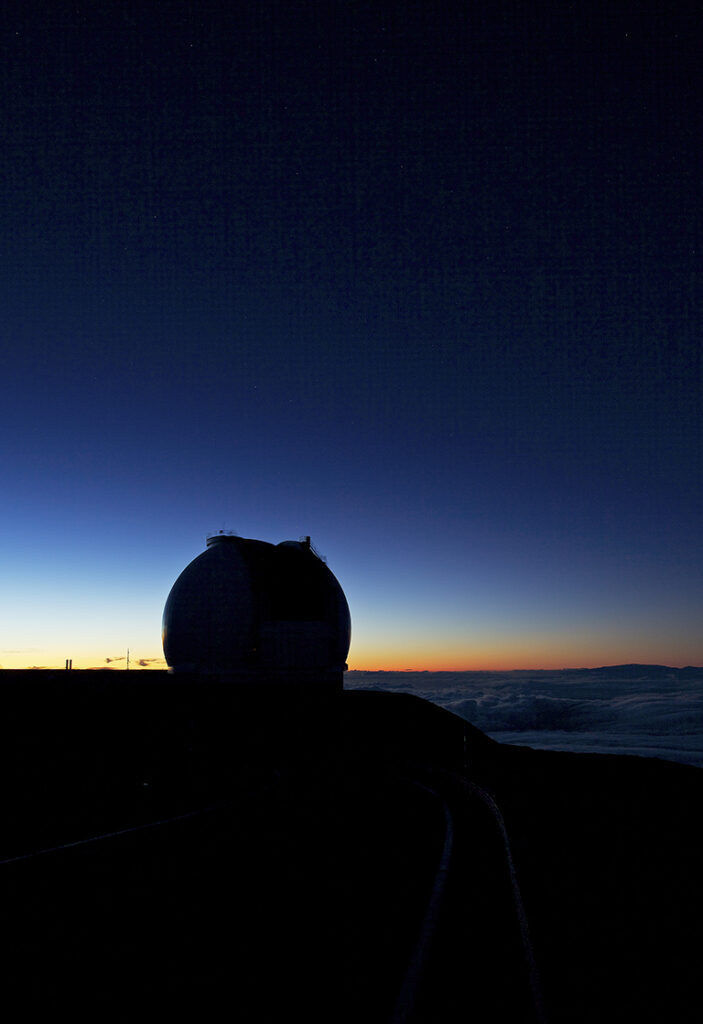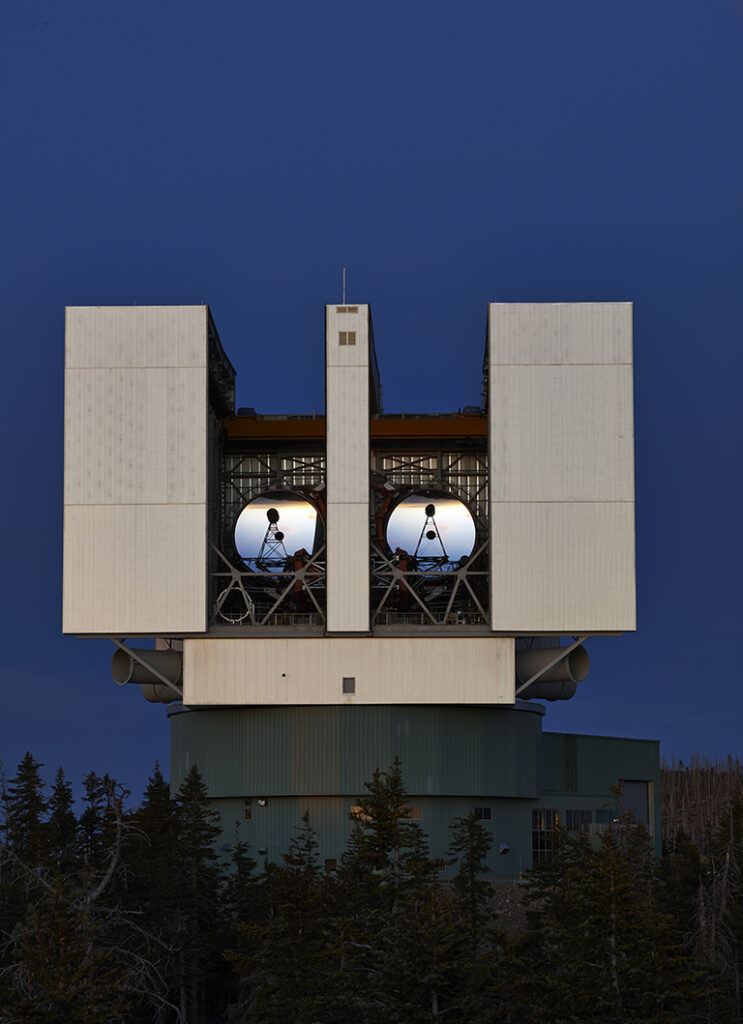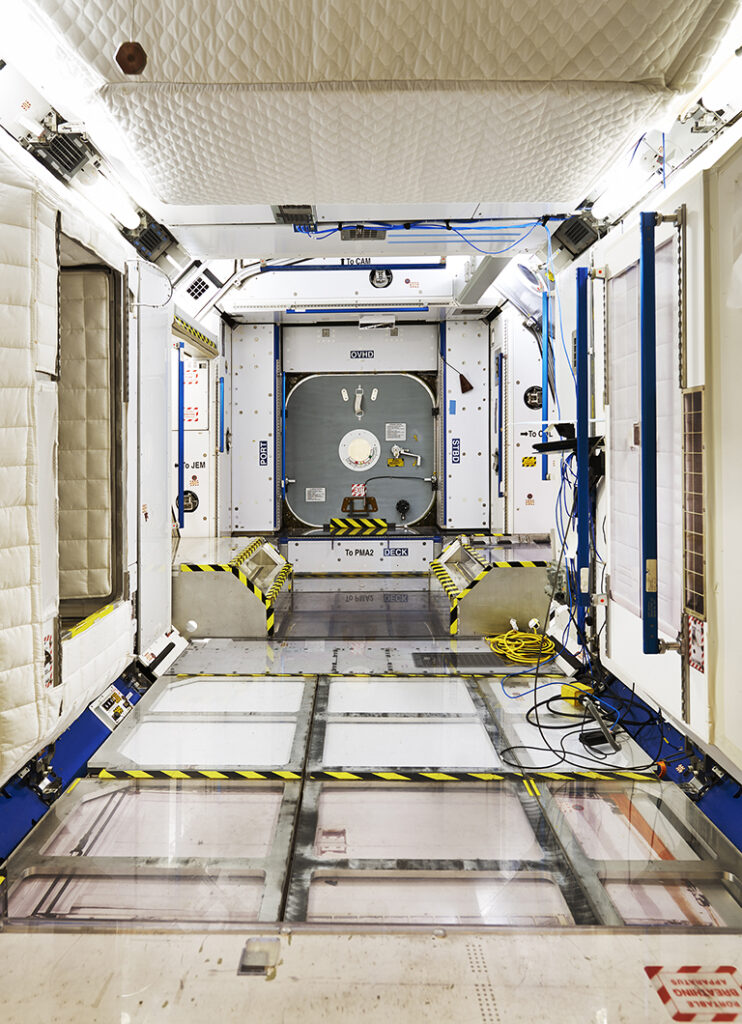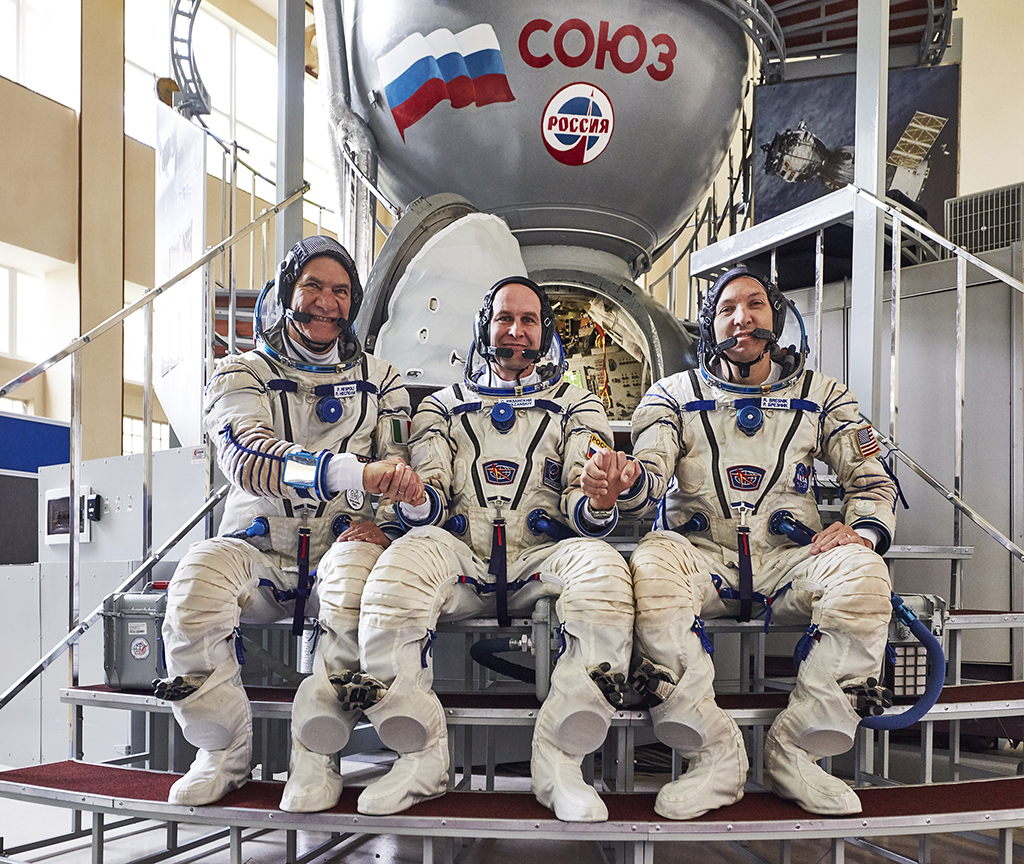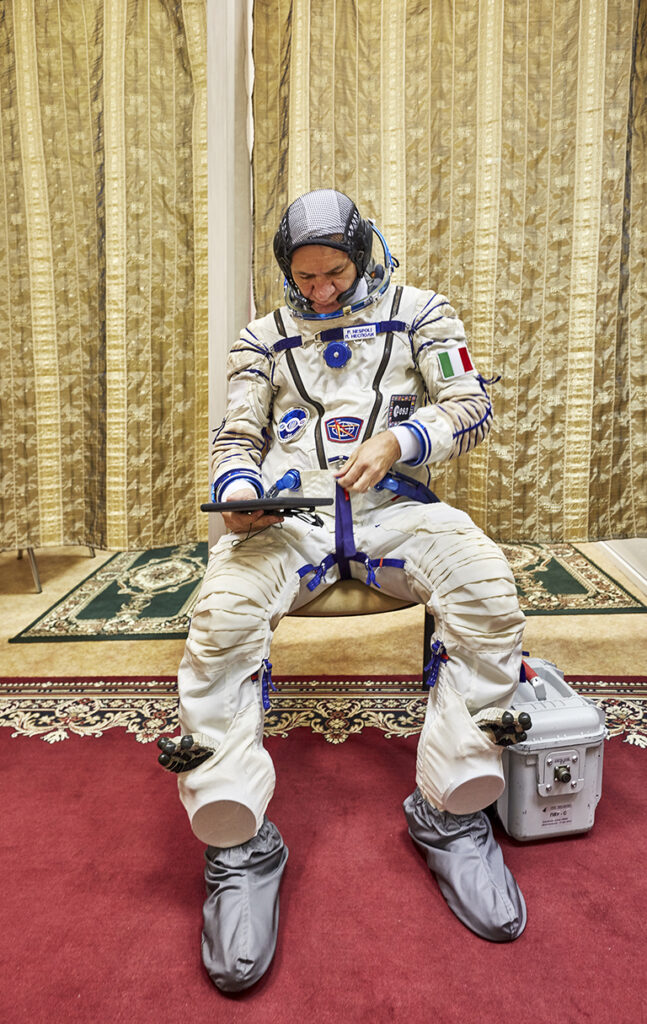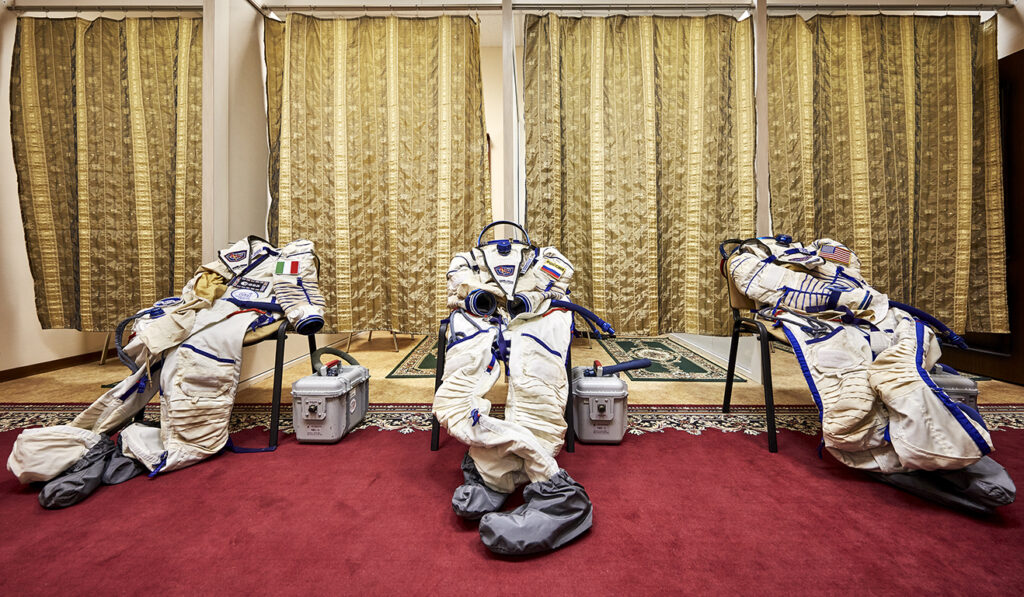Intro
Enrico Sacchetti’s photographs celebrate science and technology, covering developments taking place on all seven continents. He works in both still photography and video, using medium- and large-format digital cameras, capturing his subjects in both colour and black and white. His latest project is driven by his own curiosity around the largest high-energy physics research facilities, to explore these ‘Cathedrals of Knowledge’ as they hunt for evidence of the smallest particles in our universe.
The first set of images depict large land based optical and radio telescopes from around the world and usually located in extremely remote and high altitude locations.
The second set of photographs show the various training facilities in the US and Russia where astronauts train before launching to the International Space Station which orbits at 400km above the surface of the Earth.
If you are interested in purchasing prints of any photographs, please contact photographer Enrico Sacchetti directly: enrico@es-photography.com
Exhibit
Alma
The Atacama Large Millimetre Array Observatory (ALMA) is located in the
Atacama Desert in northern Chile. Currently the most powerful radio telescope ever built, ALMA is composed of 66 high-precision antennas that look at star formation during the early years of the Universe. ©enrico sacchetti
Arecibo Telescope
The Arecibo Telescope in Puerto Rico was a 305m radio telescope completed in November 1963 and for 53 years was the world’s largest radio telescope. It was primarily used for research in deep-space astronomy, atmospheric science, as well as the search for extra-terrestrial intelligence as part of the SETI program.
The Telescope finally collapsed on December 1st 2020 due to damage caused by Hurricane Maria in 2017 and earthquakes in 2019 and 2020. The photograph was taken immediately after a tropical storm travelled through the local area. ©enrico sacchet
The iconic telescope, set into a natural sinkhole in the Puerto Rican landscape, played an important role in astronomical research. The discovery of the first binary pulsar, accurate measurements of the rotation of the planet Mercury, and the first confirmed exoplanets, which were found orbiting pulsar PSR B1257+12, all took place there.
As well as being a key scientific facility, the telescope can also be spotted as the backdrop to the 1995 Bond film “Goldeneye”, as well as the film adaptation of Carl Sagan’s “Contact” in 1997. ©enrico sacchetti
Pressurized Cargo Module
The Pressurized Cargo Module is used to resupply the International Space Station. It is an expendable American cargo spacecraft so it does not provide any return capability, but it can be loaded with obsolete equipment and trash which burns up as it re-enters Earth’s atmosphere. ©enrico sacchetti
GMT Mirror
The third mirror for the upcoming Giant Magellan Telescope (GMT) being polished. The GMT is currently being built on a peak in the Andes Mountains in Chile at an altitude of over 2,550m. It will be one of the world’s largest optical telescopes. The photo depicts the holding clasps underneath the mirror as its face is being polished. ©enrico sacchetti
Gran Telescopio Canarias
The Gran Telescopio Canarias (GTC) is a segmented 10.4m circular mirror, formed by 36 hexagonal components. GTC is one of the most advanced telescopes and uses active and adaptive optics to optimize image quality. GTC is able to observe both optical and infrared light coming from celestial objects. The GTC is located at the Roque de los Muchachos Observatory on the island of La Palma in the Canary Islands. ©enrico sacchetti
ISS Cupola
A model of the International Space Station’s (ISS) Cupola, built by the European Space Agency (ESA). It provides an observation and work area for the ISS crew, and its seven windows are used to conduct experiments, monitor docking of other spacecraft, and make observations of Earth. ©enrico sacchetti
James Clerk Maxwell Telescope
The James Clerk Maxwell Submillimetre Telescope is a 15m radio telescope operating in submillimetre wavelengths of the electromagnetic spectrum (far-infrared to microwave) primarily utilised to study the Solar System, interstellar dust and gas, and distant galaxies. The Telescope is located near the summit of Mauna Kea at 4,092m on the Big Island in Hawaii. The photograph shows the rear of the Telescope away from its main dish. ©enrico sacchetti
Johnson Space Centre
Photo 1: Italian and European Space Agency astronaut Paolo Nespoli’s taking part in his final simulated EVA training before launching to the International Space Station on Expedition 52/53, on a mission called VITA.
Astronauts wear suits designed to provide neutral buoyancy in the water to help simulate the microgravity that they would experience during a spaceflight.
This specialised training takes place at NASA’s Neutral Buoyancy Laboratory near the Johnson Space Centre in Houston, Texas. ©enrico sacchetti
Photo 2: A training mock-up of a section of the International Space Station submerged at NASA’s Neutral Buoyancy Laboratory near the Johnson Space Centre in Houston, Texas. ©enrico sacchetti
Photo 3: The Shuttle Engineering Simulator, also called “the dome”, at NASA’s Johnson Space Centre in Houston. The Simulator is a mock-up of the aft part of the space shuttle cockpit and is where astronauts practice most of the robotic arm, remote manipulator system, training via a virtual one. Projected onto the dome are window views of what astronauts will see when they are working in space giving the astronauts a 360-degree immersive simulation. ©enrico sacchetti
Photo 4: The famous and recognisable mission control centre located at the Johnson Space Centre in Houston, Texas. This is where all flight missions to the International Space Station are managed. ©enrico sacchetti
Photo 5: The control room of NASA’s Neutral Buoyancy Laboratory near the Johnson Space Centre in Houston, Texas. This is where engineers monitor and guide the astronauts who are training underwater in the Neutral Buoyancy pool. ©enrico sacchetti
Keck Telescope and Observatory
A night-time shot of the Keck II Telescope of the W. M. Keck Observatory located at an elevation of 4,145m near the summit of Mauna Kea in Hawaii. The laser light creates a Laser Guide Star 100km above the sky which is used to obtain crisper images of celestial objects. The lights glowing far in the distance are the city lights of Honolulu, over 160km away. ©enrico sacchetti
Keck II Telescope of the W. M. Keck Observatory near the summit of Mauna Kea in Hawaii. The image is shot from the approach road to Mauna Kea’s summit as the sun was rapidly disappearing below the horizon at sunset. ©enrico sacchetti
The Large Binocular Telescope
The Large Binocular Telescope (LBT) is an optical telescope located at 3,300m on Mount Graham, in south-eastern Arizona, United States. This telescope has been designed with two 8.4m mirrors mounted on a common base, hence the name “binocular”. When using both 8.4m mirrors the LBT has the same resolution of an equivalent 22.8m mirror. ©enrico sacchetti
Nasa Johnson Space Centre
A training mock-up of a section of the International Space Station (ISS) at NASA’s Johnson Space Centre in Houston. Astronauts spend many hours training and simulating all possible scenarios before launch, including fighting fires onboard the ISS. ©enrico sacchetti
Sloan Digital Sky Survey
Photo 1: The Sloan Digital Sky Survey is an optical telescope at Apache Point Observatory in New Mexico, United States. Its main task is to map a detailed three-dimensional map of the Milky Way as well as 10,000 galaxies and quasars. ©enrico sacchetti
Photo 2: The Square Kilometre Array (SKA) is a radio telescope project currently being built in Australia and South Africa. When completed it will have a total collecting area of approximately one square kilometre. The photo depicts the first SKA dish prototype built in the semi-desert Karoo province of the Northern Cape, South Africa.
SKA will study the early Universe, dark matter and dark energy, cosmic magnetic fields, and exoplanets. ©enrico sacchetti
Photo 3: MeerKat is a radio telescope array consisting of 64 antennas in the semi-desert Karoo province in the Northern Cape of South Africa, which has been incorporated into the first phase of the Square Kilometre Array (SKA). SKA and MeerKat will study the early Universe, dark matter and dark energy, cosmic magnetic fields, and exoplanets. ©enrico sacchetti
The Submillimetre Array
The Submillimetre Array consists of eight 6m diameter radio telescopes arranged as an interferometer for submillimetre wavelength observations, located at Mauna Kea Observatory in the state of Hawaii, United States.
An interferometer consists of two or more separate telescopes that combine their signals, offering a much higher resolution than each individual telescope could.
Astronomers use these types of telescopes to examine the processes in star formation as well as the formation and evolution of galaxies. ©enrico sacchetti
Star City
Photo 1: Located at the Yuri Gagarin Cosmonaut Training Centre just outside of Moscow, this mock-up of the Russian Soyuz spacecraft is used by astronauts and cosmonauts to train for their missions to the International Space Station which orbits the Earth at a height of around 400km. ©enrico sacchetti
Photo 2: A group photo to immortalise the final training day of the crew of Expedition 52/53, before departing for the Baikonur spaceport in Kazakhstan to launch for the International Space Station as part of the VITA mission.
L-R: Italian astronaut Paolo Nespoli, Russian cosmonaut Sergey Ryazansky, and American astronaut Randy Bresnik. ©enrico sacchetti
Photo 3: Italian and European Space Agency astronaut Major Paolo Nespoli at the Yuri Gagarin Cosmonaut Training Centre (GCTC) in Moscow. Taken during his final training days before departing for the Baikonur spaceport in Kazakhstan to launch to the International Space Station with Expedition 52/53 on the VITA mission. ©enrico sacchetti
Photo 4: Three Russian Sokol space suits meticulously laid out in the dressing/prep room. They are ready to be donned by astronauts and cosmonauts for one of their many training days in the Soyuz mock-up spacecraft located at the Yuri Gagarin Cosmonaut Training Centre just outside of Moscow. ©enrico sacchetti
Telescope Nazionale Galileo
The Telescopio Nazionale Galileo is the flagship 3.58m Italian optical telescope located at Roque de Los Muchachos Observatory in the Canary Island of La Palma, Spain. The telescope’s optical quality is ensured by an active optics system which performs real-time corrections to compensate for the deformations of the primary mirror to ensure the clearest and sharpest images possible. ©enrico sacchetti
Very Large Telescope
Photo 1: The Very Large Telescope (VLT) is operated by the European Southern Observatory on Cerro Paranal in the Atacama Desert in northern Chile. The VLT consists of four individual 8.2m diameter telescopes, operating at the visible and infrared wavelengths, complemented by four movable Auxiliary Telescopes (ATs) of 1.8m.
Photo 2: The VLT is generally used independently but can also be used combined as an astronomical interferometer acting like a single telescope for higher resolving power of a 16m single telescope making it the largest optical telescope in the world. Among the pioneering observations carried out by the VLT is the first direct image of an exoplanet. ©enrico sacchetti
Photo 3: Working in unison, the Very Large Telescope (VLT) forms an array which is complemented by these four movable Auxiliary Telescopes (ATs) of 1.8m aperture. The four ATs can be used in combination as an astronomical interferometer to act like a single telescope for higher resolving power. The VLT is operated by the European Southern Observatory on Cerro Paranal in the Atacama Desert in northern Chile. ©enrico sacchetti
Photo 4: The interior of the Very Large Telescope’s (VLT) 4th Telescope with the 4-Laser Guide Star Facility. In the photo we can see in the foreground two of the Laser Guide Star Units. The four VLT optical telescopes are named Antu, Kueyen, Melipal, and Yepun which come from the names for the Sun, Moon, Southern Cross, and Venus in the language of the Mapuche people of Chile. ©enrico sacchetti
Photo 5: The Very Large Telescope’s 4th Telescope, Yepun with its 4-Laser Guide Star Facility activated during an observation run, as viewed from a nearby mountain. ©enrico sacchetti

